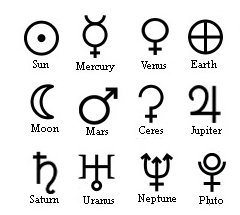Ca2-26 appears to be the same as Cb4-20:
The diffference in point of time could perhaps be dismissed as due to the idea of the season which is opening up should start 3 days ahead of the formal date of its beginning. However, a consequence must then be to change the rule for calculating the nakshatra dates so as for instance the nakshatra RA day corresponding to July 16 would be not 117 + 184 = 301 = 381 (January 16) - 80, but 200 (July 19) + 181 = 301. The heliacal rising of Aldebaran in the G text was in RA day 68 at glyph number 5 counted from Gb8-30. Therefore Ga2-26 must have been at RA day 68 + (57 - 5) = 120 = July 19 (200), when Drus (χ Carinae) rose with the Sun:
In other words, I assume the glyphs could primarily be referring to nakshatra positions, in which case Altair could be connected with the variant of hoea in both Ca2-26 and Cb4-20:
On side b of the Mamari tablet the rule could be to reduce the nakshatra dates with 183 in order to find the heliacal dates. 380 (January 15) - 183 = 197 (July 16). On side a of the Small Santiago tablet the rule could be to reduce the nakshatra dates with 180 in order to find the heliacal dates. 380 (January 15) - 180 = 200 (July 19). But I would rather have had the numbers 184 respectively 181, because 184 + 181 = 365. Possibly the difference is due to 2 not to be counted 'zero' days. When measuring time the first unit will not be registered until after the first unit is in the past. Metoro said kua vaha at Cb4-20, when Azmidiske (ξ Puppis) may have been considered to have risen with the Sun because in the night Altair was seen close to the full Moon. From the right ascension day of Altair (300) the opposite heliacal RA date could have been calculated as 300 - 183 = 117 = the RA day when Azmindiske rose with the Sun. According to another calculating rule the opposite heliacal RA date could have been calculated as 300 - 180 = 120, corresponding to the RA day when Drus rose with the Sun. The G and C texts seem to agree on some point down in the Sunken Ship as the point where a new season should begin. Indeed, if this point in time was determined from Altair (who raised a Dead Man 'on high'), then the 'mirror image' half a year earlier should be something very low down. Drus (χ Carinae) is at the bottom of the shield of Saturn (which I have guessed it is) according to Hevelius. But Azmidiske (ξ Puppis) is much higher up, at the top of the shield at the stern of the ship. The perspective in C is not the same as that in G.
I suggest the shield at Azmidiske (ξ) refers to Jupiter. To its right follows that of Venus, that of Saturn, that of Sun etc in the order of the days of the week. According to C the beginning will then be where Jupiter rules, in contrast to the perspective of the G text where the beginning is at Saturn (χ). In the Babylonian zodiac the sign of Jupiter is between Crab and Leo and the sign of Saturn a quarter later, at the Mad Dog.
The small differences between the forms of Cb4-20 (at July 16 ruled by Jupiter) and Ga2-26 (at July 19 ruled by Sun) could be significant. The opening of a new season ought to be named vaha. A space between fingers is vaha rima:
The opening in spring is vaha-hora (where we can imagine vaha ora - the opening of the season of life) and the opening in autumn is vaha-toga (the opening down in the southwest). Possibly there was no vaha-mea (opening at high summer, the season of plenty), because there could be openings only where the winter and summer 'bivalve shells' were joined together.
| ||||||||||||||||||||||||||||||||||||||||||||||||||||||||||||||||||||||||||||||||||||||||||||||||||||||||||||||||







